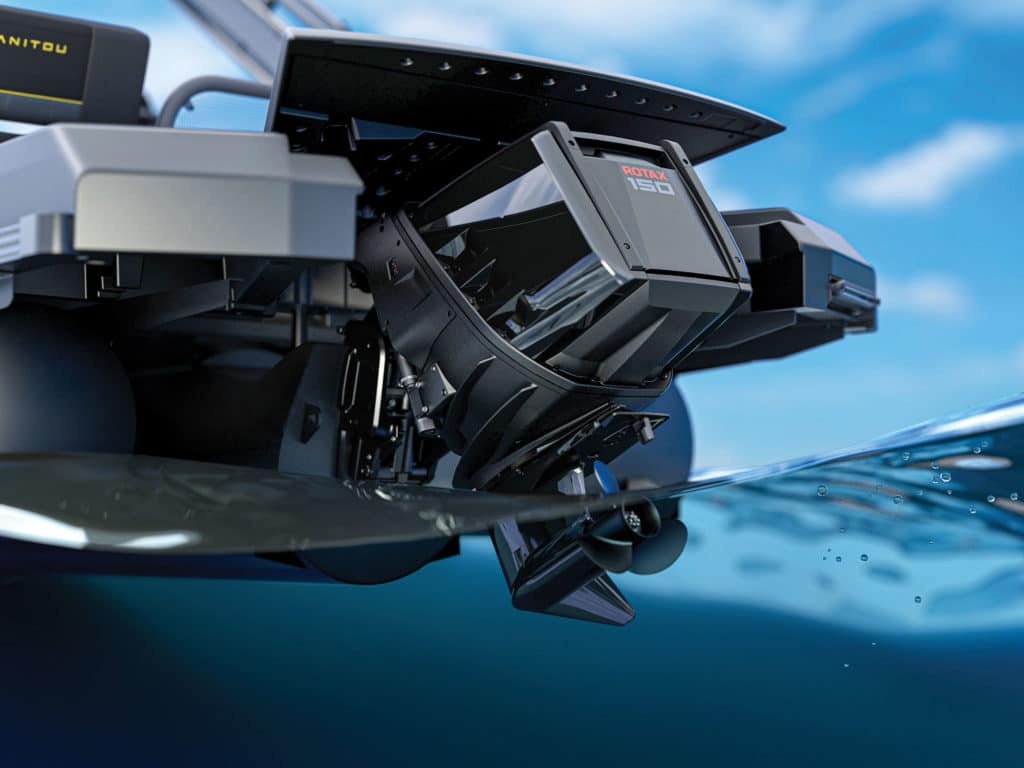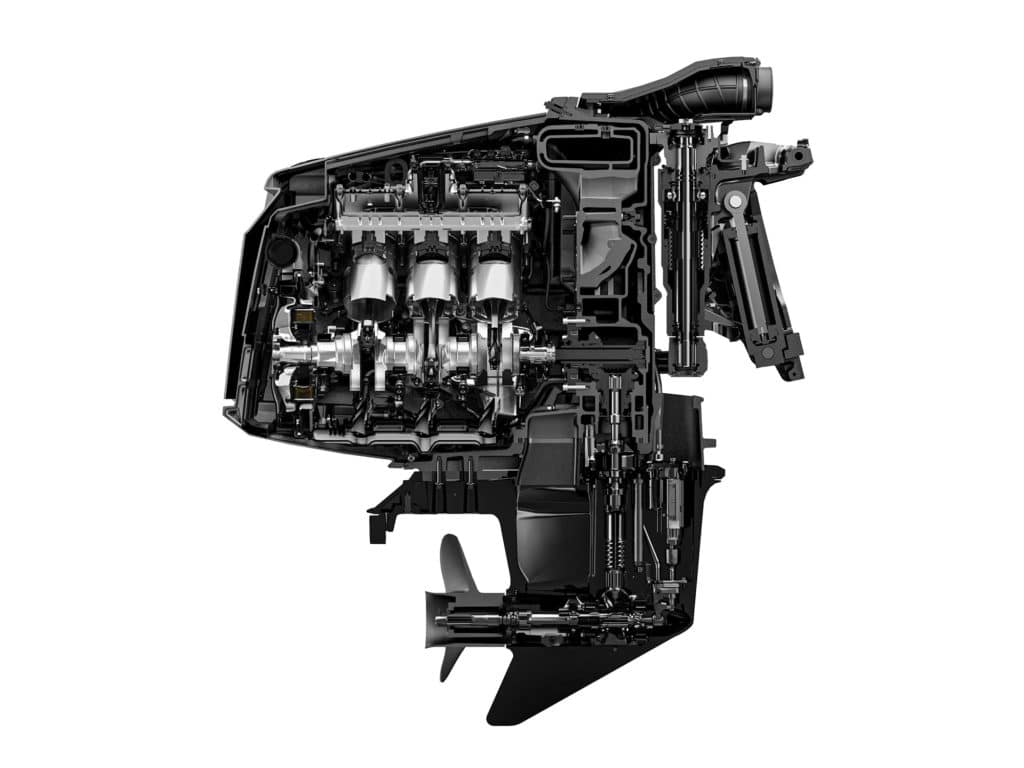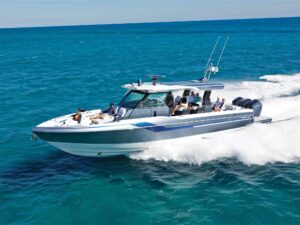
And now for something completely different. The new Rotax outboard from BRP is designed to live below an extended swim platform, eliminating the intrusion a traditional outboard imposes on the transom. In short, you get outboard power without having to see or play around the outboard. To achieve this low profile, the powerhead is oriented horizontally and enclosed in a watertight case. The 115 hp Rotax S115 and 150 hp Rotax S150 are exclusive to BRP boat brands Alumacraft, Manitou and, in Australia, Quintrex.
The 115 hp and 150 hp versions of the Rotax outboard share a 1.9-liter three-cylinder, two-stroke powerhead, with the 150 gaining variable exhaust ports for a power boost. Evinrude models featured the powerhead, with its E-Tec direct fuel injection, standard auto trim, and gear case with a 2.08-to-1 ratio, before BRP discontinued that brand in 2020. Digital throttle and shift control is standard. Conventional hydraulic ram handles power trim and tilt, while a hydraulic helix integral to the motor bracket actuates power steering. The gear case tilted clear of the water in the pontoon application we tested.
Air enters the engine case through a flexible tube routed into the boat transom. A 3.5-gallon reservoir in the boat carries injector oil. The motor mounts on a standard outboard transom and bolt holes, and has a 25-inch shaft length. Like past Evinrude models, the motor has a “self-winterizing” function that oils down the cylinders for long-term storage. The base warranty offers three years or 300 hours of coverage.

Because the motor literally lives in the water, its cast-aluminum cover secures with 15 bolts and a hermetic seal. Maintenance that requires removing those bolts for access to the powerhead is scheduled only after five years or 500 hours. A number of internal features intend to protect the powerhead from moisture. A probe in the bottom of the case detects condensation that could collect there in humid conditions and triggers a small pump to expel that water. BRP explains that this probe and pump are not intended to protect the engine from catastrophic damage that would allow a flood of water to enter the case. A high-rise exhaust manifold and a check valve on the intake are designed to prevent water intrusion through the exhaust when the engine is not running. The check valve is electrically activated when the engine is keyed off. It has the effect of sealing a pocket of air within the engine—imagine holding your finger over the end of a straw and then lowering the straw into a glass of water—to prevent water from pushing back through the exhaust, such as if the motor were completely submerged under a large wake. That check valve could leak down over a long period of time, so there’s another probe in the exhaust that will detect water before it reaches the engine and can trigger an air pump that will add pressure to the crankcase. If the boat battery goes dead, the check valve will remain closed, but the pumps and sensors will not function. BRP says the current draw is minimal.
There are no specs available, but BRP says the rigged Rotax outboard weighs about 522 pounds—that’s about 57 pounds heavier than a Mercury 150 FourStroke outboard and a significant 150 pounds heavier than a Mercury 115 FourStroke. However, BRP points out that when the boat is at rest, the buoyancy of the watertight motor case mitigates some of the weight differential.
Read Next: BRP Unveils Rotax Outboard Engine
We tested a prototype 2023 22-foot Manitou Cruise Max model powered by a Rotax S150, which produced competitive performance. The 35 mph top speed and cruising fuel economy were close to that of the triple-tube Viaggio Lago 22S with a Mercury 150 we tested last year. BRP says the Max Deck aft platform over the motor adds 38 square feet of usable space to the boat. When the Rotax motor is trimmed, it stays below the deck; when tilted, it raises a hinged center section of the Max Deck. The motor runs smooth, and we noted about 80 dB(A) at cruising speed—not stealthy but not objectionable. However, we think the higher-pitch tone created by the two-stroke Rotax engine makes it seem louder than a 150 hp four-stroke outboard. Manitou will not offer this all-new tritoon boat with an equivalent Mercury outboard, so it’s impossible to make a price comparison.
BRP says the Rotax outboard design is “scalable,” so expect to see more-powerful versions in the future. Born of a brainstorm in 2019, the Rotax outboard required a determined effort to bring to market. As always, a few seasons on the water will be the true test of this interesting engine concept.









